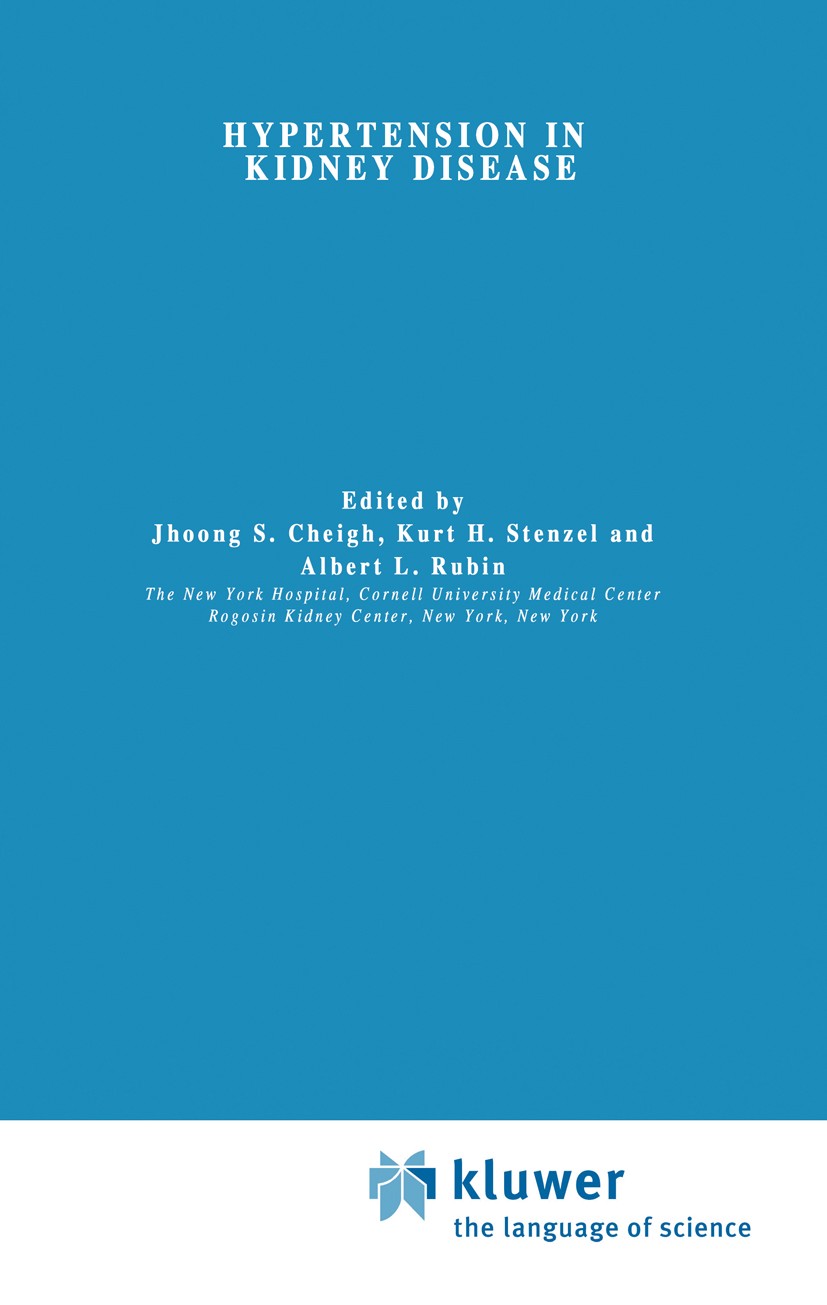| 書目名稱 | Hypertension in Kidney Disease | | 編輯 | Jhoong S. Cheigh,Kurt H. Stenzel,Albert L. Rubin | | 視頻video | http://file.papertrans.cn/431/430719/430719.mp4 | | 叢書名稱 | Developments in Nephrology | | 圖書封面 |  | | 描述 | Blood pressure control is central to all bodily functions. There are many points in the multifaceted cybernetic system wherein hypertension may be produced. Hypertension is a ‘young‘ disorder whose existence has been known for less than a century. It is not only extremely prevalent among every popula- tion, but also deleterious to the health of mankind. The more we understand about hypertension‘s harmful effects, the more urgent is the need for its effective control. The kidney is the central organ that controls vascular tone and body fluid volume; these two factors are dominant in determining arterial blood pres- sure. Hence, it is not surprising to find in hypertensive disorders that there are abnormalities in the kidneys, functional or anatomical, subtle or overt, that cause or are the consequence of hypertension. The first suggestion that the kidney could cause hypertension was made in 1836, before arterial pressure could even be measured, by Richard Bright. He observed that cardiac hypertrophy was often present in patients who died of renal disease. It was, however, Goldblatt and his colleagues in 1934 who opened the modern era of experimental and clinical research in renal hy | | 出版日期 | Book 1986 | | 關(guān)鍵詞 | arterial pressure; blood pressure; hypertension; kidney; vascular disease | | 版次 | 1 | | doi | https://doi.org/10.1007/978-94-009-4271-4 | | isbn_softcover | 978-94-010-8397-3 | | isbn_ebook | 978-94-009-4271-4 | | copyright | Martinus Nijhoff Publishers, Dordrecht 1986 |
The information of publication is updating

|
|
 |Archiver|手機(jī)版|小黑屋|
派博傳思國際
( 京公網(wǎng)安備110108008328)
GMT+8, 2025-10-11 21:40
|Archiver|手機(jī)版|小黑屋|
派博傳思國際
( 京公網(wǎng)安備110108008328)
GMT+8, 2025-10-11 21:40


